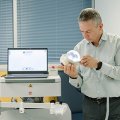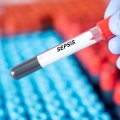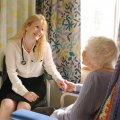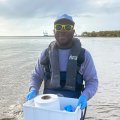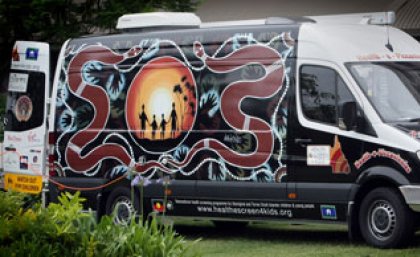
Queensland has claimed a knockout blow against the tyranny of distance in health care today with the opening of The University of Queensland’s Centre of Research Excellence in Telehealth.
UQ Centre for Online Health Deputy Director Associate Professor Anthony Smith said the telehealth centre would focus on delivering health services to remote and regional areas, connecting city-based specialists with patients across the State.
“More than a million Queenslanders live in remote and regional areas, sometimes hundreds of kilometres from a health clinic or access to a medical specialist,” Dr Smith said.
“Telehealth, which links clinicians with patients with health services, using techniques such as videoconferencing and email, will connect people living in remote places with specialist services not readily available in rural and remote areas.”
Dr Smith said the centre would support collaboration between research teams working to develop capacity in telehealth for everyone in Queensland.
“However, it will have a significant focus on Indigenous Australian healthcare, working to improve the health status of indigenous Australians, who have a lower expectancy than their non-indigenous counterparts, mainly due to a higher prevalence of chronic health conditions," Dr Smith said.
“The telehealth centre will be of particular benefit to the State’s remote Indigenous communities, with programs such as a mobile telemedicine service established in the South Burnett.
“Usually patients need to travel to receive specialist care, often very long distances, which is not only inconvenient but also very expensive.”
Dr Smith said some specialist teams travelled to remote communities to deliver health care services, but such trips were intermittent.
“Some patients don’t receive the care they require because of the difficulties of having to leave their community for an appointment or treatment,” he said.
“One example of highly-effective telehealth is the mobile telemedicine program in Cherbourg, which delivers routine ear and hearing screening services and a visiting outreach program that delivers surgical services in the community.”
The program collects patient information and digital images that are assessed by a team of specialists at Brisbane’s Royal Children’s Hospital.
Aboriginal Health Worker Cecil Brown, who manages the Cherbourg screening, said the telemedicine service started in 2009, and routine health screening had been carried out at 21 schools for about 1250 children.
He said screening for chronic ear conditions had increased from about 38 per cent to more than 85 per cent of eligible cases, and the waiting time from referral to specialist appointments had reduced from 73 days in 2009 to 29 days in 2011.
An ear, nose and throat specialist visits the Cherbourg area based on the assessments, and can do any necessary surgery having already assessed and identified the child as needing treatment.
The screening service comprises a custom-designed screening van with telemedicine equipment on board, with wireless telecommunication links so specialists in Brisbane can assess children from a distance using information collected by health workers in the community.
Interviews:
- Associate Professor Anthony Smith +61 (7) 3346 4702, 0413 901 644, asmith@uq.edu.au
- Cecil Brown +61 (7) 4169 8900
Media: UQ Centre for Online Health, Joanne Grey, +61 (7) 3176 6934, 0402 644 920, j.grey2@uq.edu.au, or Faculty of Medicine and Biomedical Sciences media manager Bernadette Condren, +61 (7) 3346 5309, 0413 881 597, b.condren@uq.edu.au.



